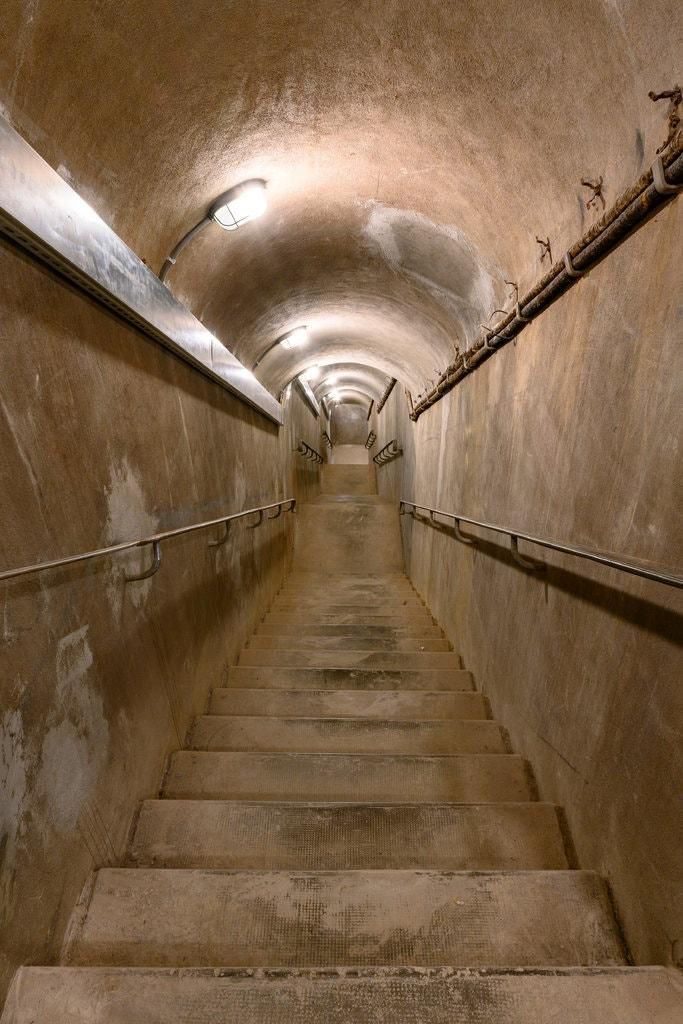Paris Basement Used as WWII Resistance Headquarters Transformed Into Museum Centerpiece
The soon-to-open museum also explores the lives of Resistance leaders Jean Moulin and General Leclerc
/https://tf-cmsv2-smithsonianmag-media.s3.amazonaws.com/filer/d2/6f/d26fc161-ad61-4495-b25a-c85640644efc/7360.jpg)
On New Year’s Day 1942, a former government official named Jean Moulin parachuted into Nazi-occupied France on the orders of General Charles de Gaulle, leader of the Free French movement. His mission—penned on a microfilmed document tucked inside of a matchbox—was to “bring about, within the zone of metropolitan France, … unity of action by all elements resisting the enemy and his collaborators.”
Over the next year and a half, Moulin followed this directive with unmatched persistence, leading domestic resistance efforts by founding a covert press service, creating a secret army of paramilitary forces and organizing a National Council of Resistance that united members of 15 different activist groups. Soon after this triumph, the operative was betrayed to the Gestapo; despite undergoing three weeks of brutal torture, he never yielded any information on the Resistance.
This Sunday, the 75th anniversary of Paris’ liberation from German forces, the French capital is recognizing Moulin’s legacy with the opening of the redesigned and relocated Musée de la Libération de Paris-Musée du Général Leclerc-Musée Jean Moulin. Named after the Resistance leader and a similarly towering figure in the country’s World War II lore—Philippe Leclerc de Hauteclocque, a general who led his troops from Africa to Normandy and finally Paris—the museum honors both the individuals referred to in its lengthy title and the thousands of lesser-known Resistance fighters who helped secure Paris’ freedom on August 25, 1944.

As Jon Henley reports for the Guardian, the Musée de la Libération previously existed as an obscure, undervisited space above the Montparnasse station. Comparatively, the newest iteration boasts a central location near the Catacombs of Paris, ample exhibition space, and, most impressively, the subterranean command post where Colonel Henri Rol-Tanguy, his wife Cécile and fellow Resistance members made battle plans for the city’s liberation.
According to Vivian Song of the New York Times, the basement headquarters, restored to prominence as the museum’s centerpiece, was originally used as an air raid shelter. The week before Paris’ liberation, however, Colonel Rol-Tanguy requisitioned the shelter and transformed it into a Resistance hub, installing a telephone exchange capable of bypassing tapped lines and welcoming operatives in need of a hiding place.
Today, Song reports, those visiting the underground bunker will find ample evidence of the site’s historic past: The sounds of air raid sirens, old-fashioned telephones and agents hurrying down the 100 steps needed to reach the basement emanate from speakers, while a nearby “disinfection room” built to treat victims of gas attacks houses such reminders as vintage gas masks and a stationary bike that would have been used to generate electricity during power outages.
Above the shelter, more than 300 artifacts await. A significant number of artifacts also revolve around everyday Parisians’ lives: There’s a child’s ration card-filled wallet, a wooden-soled shoe, a patriotic dress stitched to celebrate liberation and propaganda posters produced by the collaborationist Vichy government. In an interview with Virginie Janniè of French outlet C News, museum director Sylvie Zaidman says that curators also worked against presenting an idealized vision of Paris’ liberation. Instead, Zaidman says, the museum’s narrative also shares darker aspects of that history, from participants’ excesses to the “spirit of revenge” that triggered harsh retaliation against known or presumed collaborationists.

At its core, though, the Musée de la Libération strives to commemorate two individuals who pursued a common goal via varying routes. Many artifacts relate to the men honored by the museum’s name, including Moulin’s skis, the suitcase he was carrying on his last trip from London to France, and artistic accoutrements he acquired to support his cover as a gallerist, as well as General Leclerc’s walking cane and British identity papers.
Moulin, the domestic resistance organizer, died en route to Germany July 8, 1943, while Leclerc, a military leader whose 2nd Armored Division aided the fight for Paris’ freedom, died in a plane accident in 1947. “They never actually met, and they were very different people,” Zaidman tells the Guardian. “But when France fell in 1940, they made their choice—they would continue the fight, one inside their homeland, and one outside. Their common objective was France’s liberation, with a liberated Paris its greatest symbol.”
/https://tf-cmsv2-smithsonianmag-media.s3.amazonaws.com/accounts/headshot/mellon.png)
/https://tf-cmsv2-smithsonianmag-media.s3.amazonaws.com/accounts/headshot/mellon.png)